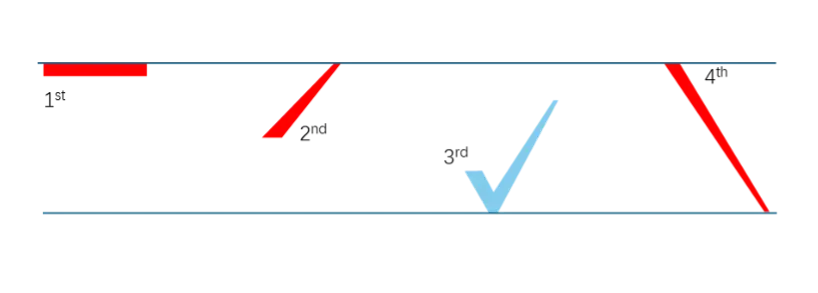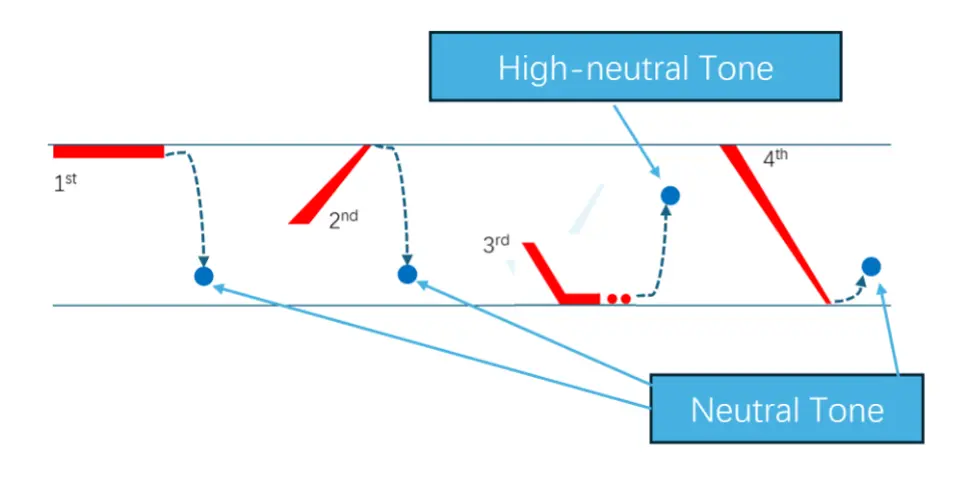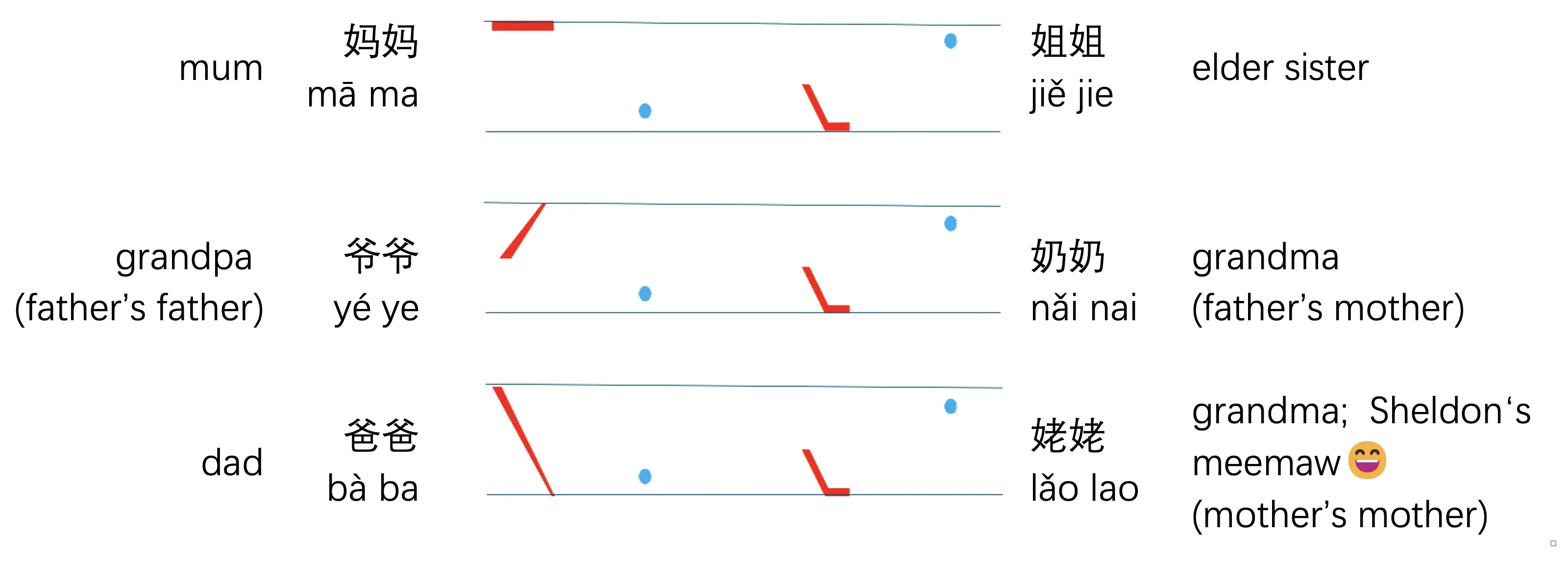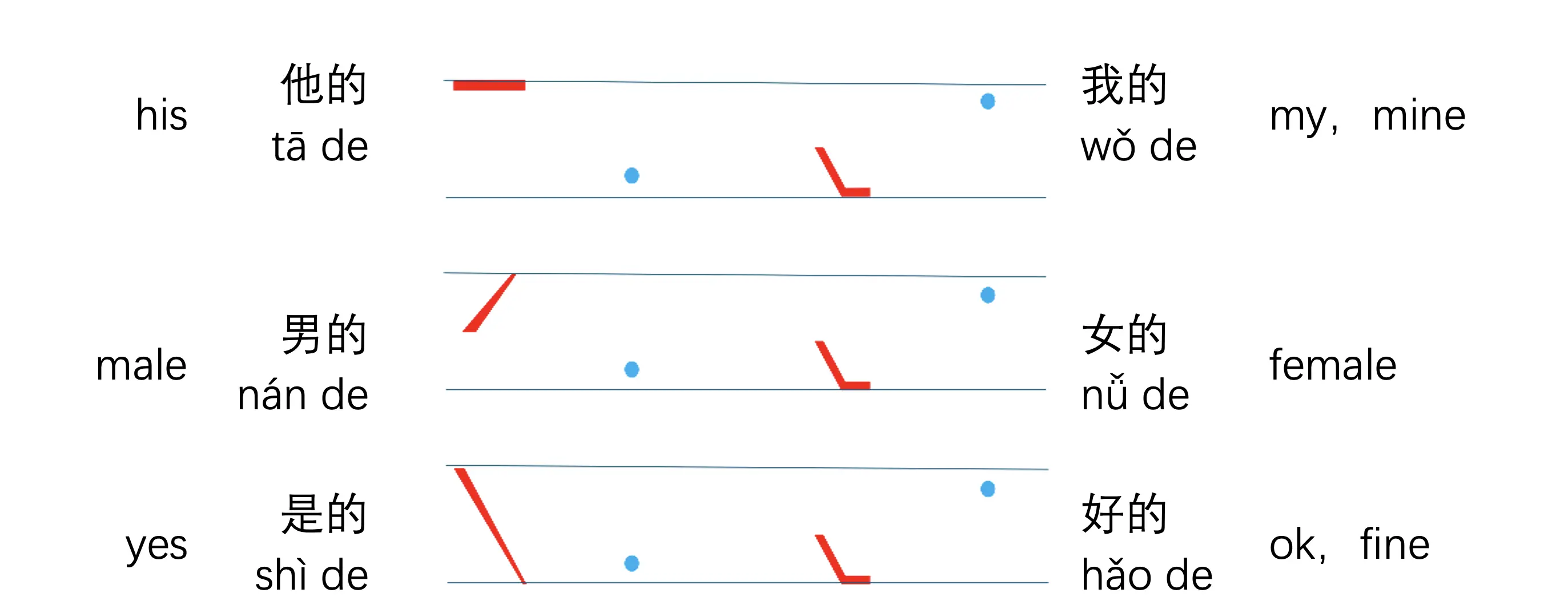· chinese tips · 4 min read
Master the 7 Tones of Mandarin Chinese: The Pitfalls of the Misleading 4-Tone System
Elevate your Mandarin language proficiency by understanding the tones in Chinese. Explore the number of tones in Mandarin and boost your speaking ability.

Mandarin Chinese has 7 tones, not 4!!
Dictionaries and textbooks commonly refer to 4 tones, but these are tones used when speaking individual Chinese characters. In actual speech, Mandarin has 7 tones which learners of Mandarin Chinese need to master.
No worry about this will make learning Mandarin harder. It will be easier. 😄Thinking there are 4 when there are actually 7 can be a major pitfall in learning Mandarin Chinese.
First Issue: The Misleading Third Tone
The first problem with the 4-tones system in traditional textbooks is related to the “3rd tone”.
Old textbooks commonly introduce the tones as the 1st tone, 2nd tone, 3rd tone, and 4th tone. The 3rd tone is described as “falling-rising”. Therefore, the 3rd tone can also be called a falling-rising tone.

The problem is that, during actual speech, over 90% of 3rd tone characters are pronounced with a “low-falling” tone, not “falling-rising”.
In other words, if you are always able to produce a single correct 3rd tone, then 90% of the time your pronunciation will sound strange.
Therefore, this tone actually looks more like the slowly falling contour drawn below. We call it the “low-falling tone”.

Second Issue: The Two Neutral Tones
Traditional textbooks often tell you that in addition to the 4 tones in Mandarin, there is a 5th tone, the neutral tone.
Some books will even tell you that:
this neutral tone is not a real tone” because whether a syllable (or character) is neutral depends on the preceding syllable. The pronunciation of a neutral tone as a tonal variation must be reflected in words and sentences. Therefore, the pronunciation of a neutral tone syllable cannot exist independently. Its tone value also depends on the tone of the preceding syllable.
So if you’re confused, that’s okay. Even many professional Chinese teachers may not fully understand, let alone the average Chinese person, even if they have received a good education and speak very standard Mandarin.
Because Chinese language teachers feel that the “neutral tone” is already too complicated and has driven both teachers and students crazy, they will not tell you that there are actually two neutral tones.
In fact, if you use SVTS (the Smart Visualized Tone-marks), the neutral tone becomes much simpler.
You just need to look at this diagram and remember that the position of the neutral tone is relatively low—except for one exception, which is when the syllable after a low-falling tone is relatively high.

I have two sets of words that can help you practice and remember the neutral tone and high-neutral tone.
Set 1:

Set 2:

Summary
Is there a good way to remember these 7 tones? Two things.
First, be sure to take a screenshot of the chart below, save it to your phone, or print it out. When studying, take it out and look at it.
Second, because of the tones in Mandarin Chinese, it is strongly recommended that beginners start learning with a professional teacher. If you don’t have a professional teacher, be sure to watch our videos on tones and pronunciation.

BTW, the terms ‘first tone’, ‘second tone’, etc., may sound simple at first, but they are not as effective as using our naming method, which is:
- High-flat tone: The highest-pitched tone, and the most basic tone. It is high and level, with no variation. It is traditionally called the ‘first tone’.
- Rising tone: It should start from the middle of your most comfortable pitch range and rise quickly, sounding like a question. It is traditionally called the ‘second tone’.
- Low-falling tone: It starts from the middle of your pitch range, descends, and then extends slightly. It is traditionally called the ‘half-third tone’. In everyday speech, you mostly hear this tone.
- Fall-rising tone: It’s like starting with a low-falling tone, but instead of extending at the end, it immediately rises. Traditional textbooks often refer to it as the ‘third tone’. In reality, Chinese people rarely use this complete falling-rising tone.
- High-falling tone: Starting from the highest point of your voice, similar to the position of the high-flat tone, it descends directly, as if saying ‘YEAH!!’ or ‘NO!!‘.
- Neutral tone: It is pronounced in a relatively low position in your voice, but not the lowest. Relax your vocal cords and produce a short and light syllable.
- High-neutral tone: Similar to the neutral tone, it is a short, light, and relaxed syllable, but produced at a relatively high position in your voice.